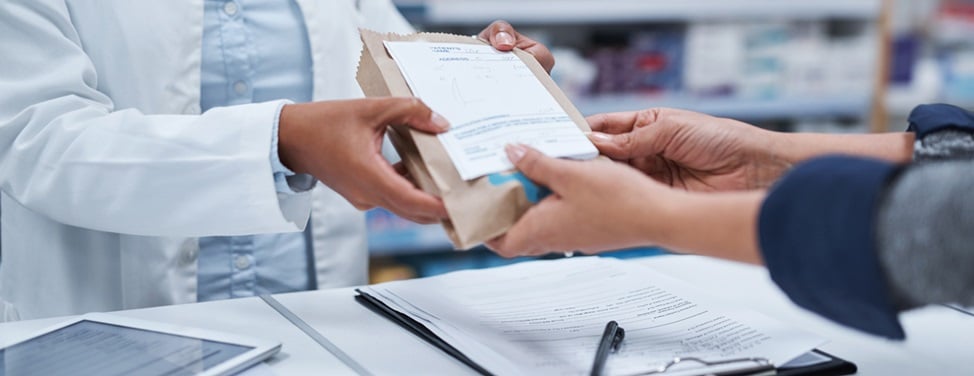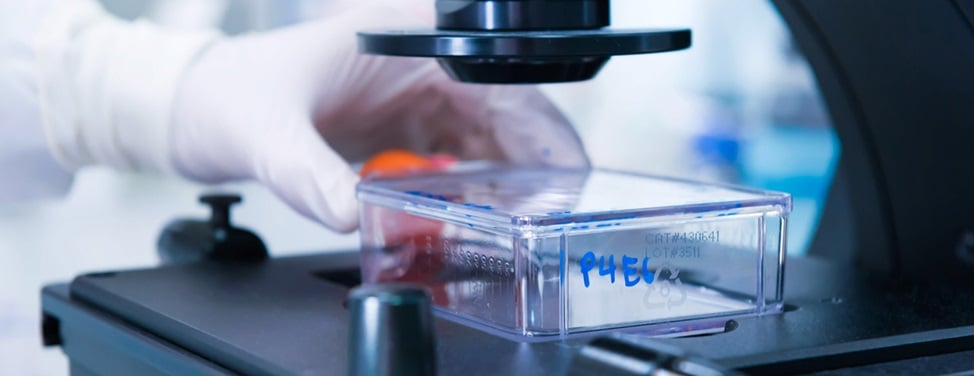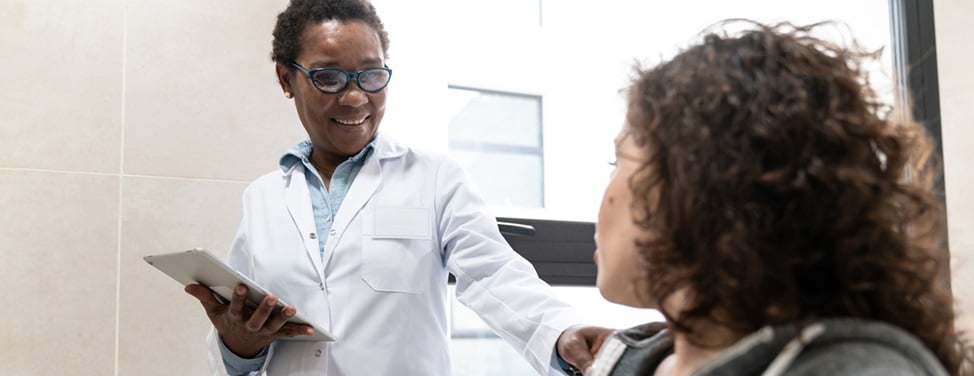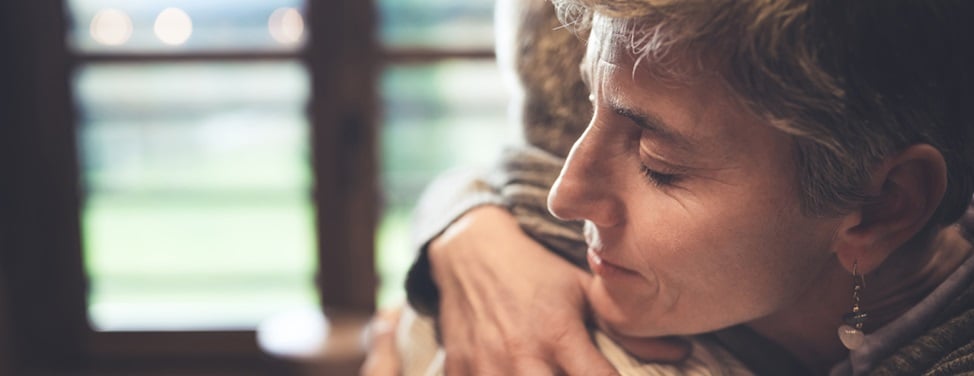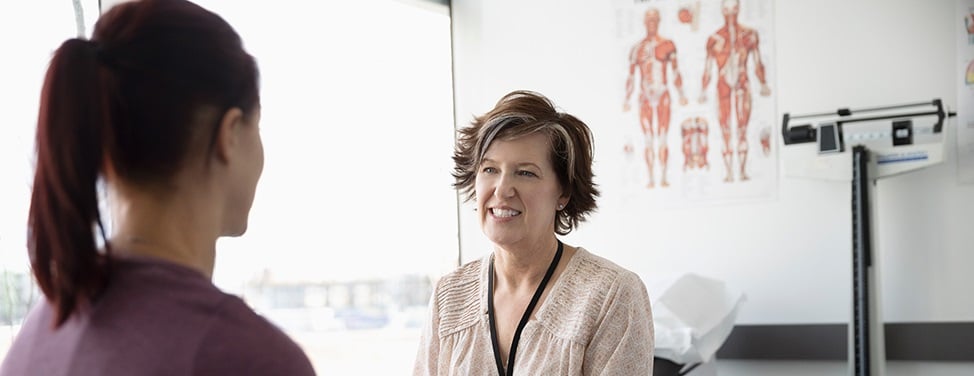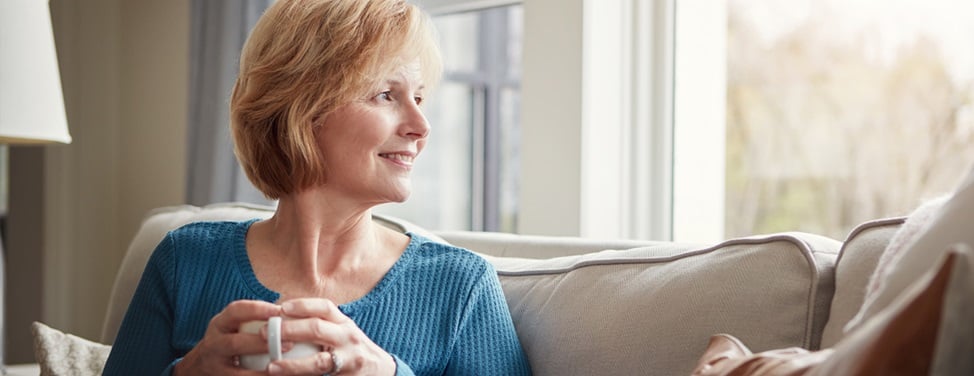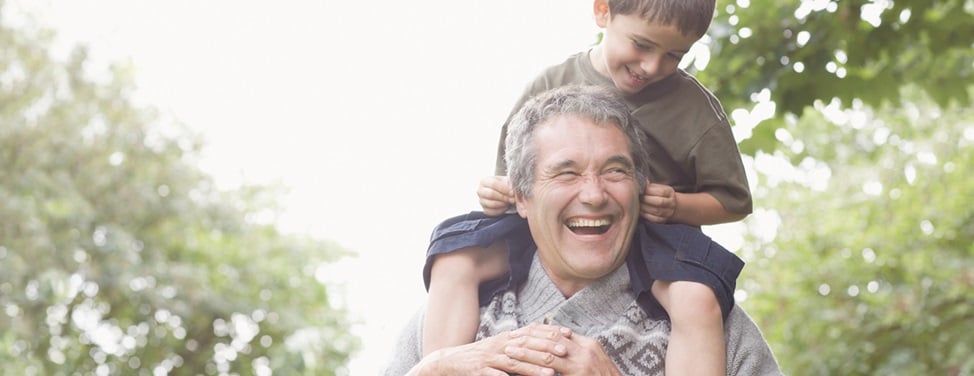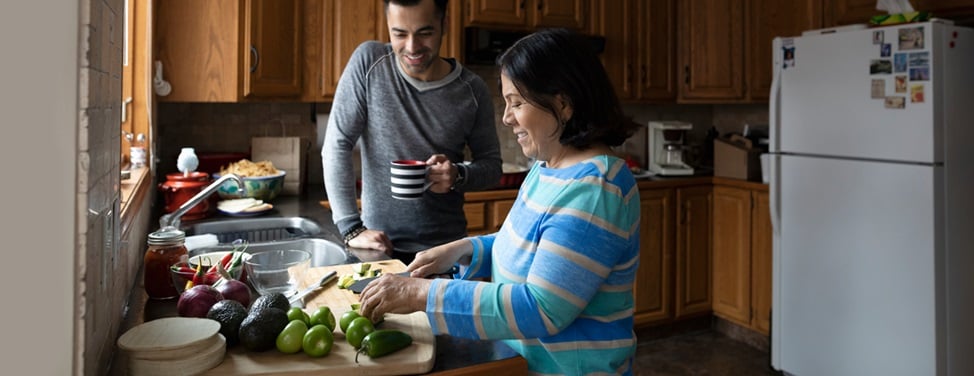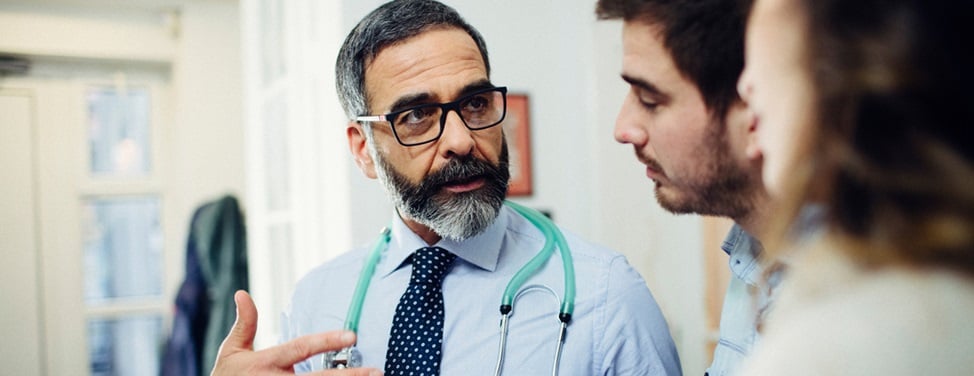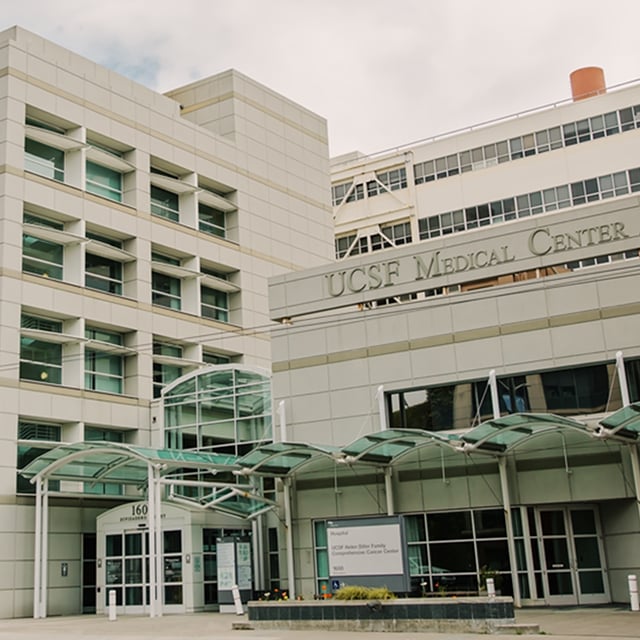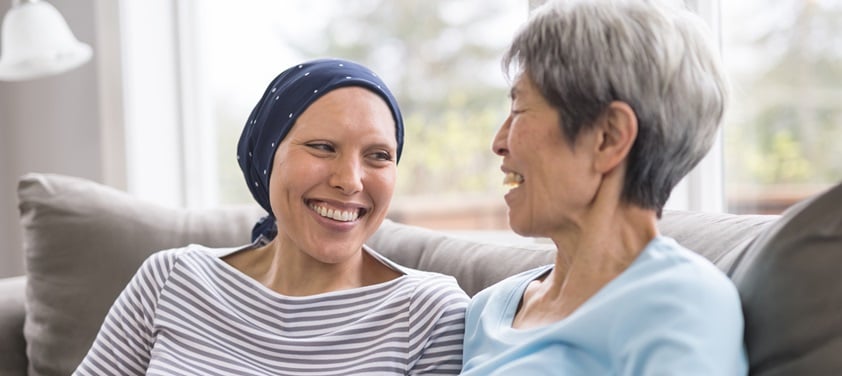Anal Cancer

Overview
What is anal cancer?
Although rare, anal cancer is becoming more common in the United States and many other countries. The condition develops in tissues of the anus, the short tube connecting the rectum (lower part of the large intestine) to the outside of the body. The anus controls the disposal of body waste during bowel movements.
Anal cancer is more often diagnosed in women than in men, with more than 90% of cases caused by the human papillomavirus (HPV). Symptoms – such as bleeding, itching or pain during bowel movements – are often mistaken for hemorrhoids but may actually indicate anal cancer or a precancerous condition known as anal intraepithelial neoplasia (AIN).
Our approach to anal cancer
At UCSF, we specialize in the early detection and treatment of anal cancer. Whenever possible, our goal is to help patients avoid anal cancer by finding and managing precancerous conditions.
We are also active in research to develop more effective therapies for these conditions.
Our team includes experts who have decades of experience specifically with anal cancer and HPV. We pioneered the use of a tool called a colposcope for diagnosing HPV-related diseases as well as high-resolution anoscopy (HRA), a procedure considered the best technique for anal cancer screening. Anal cancer is a highly curable condition if caught early, so regular screening is important.
Awards & recognition
-

Among the top hospitals in the nation
-
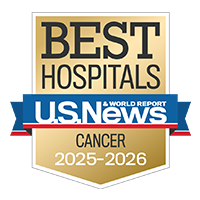
Best in California and No. 7 in the nation for cancer care
-
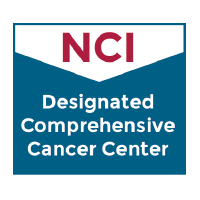
Designated comprehensive cancer center
Causes of anal cancer
The main cause of anal cancer is the human papillomavirus (HPV), a common virus that produces changes in the skin. An anal HPV infection is usually acquired through anal intercourse or from contact with genitals, fingers or sex toys infected with the virus. HPV is also the leading cause of cervical cancer.
HPV is common, posing a risk to anyone who is sexually active and hasn't had the HPV vaccine. The good news is that only a fraction of people with anal HPV infection will develop a lasting case of AIN (the precursor to anal cancer) and even fewer will develop anal cancer.
Other risk factors for anal cancer include:
- A history of anal intercourse
- A history of perianal warts (warts around and inside the anus)
- A history of vulvar warts (warts on the exterior female genitals)
- Being chronically immunocompromised, whether as a result of taking immunosuppressive medications, being HIV-positive or having gone through organ transplantation
Additional risk factors include the same ones associated with becoming infected with HPV, such as being over age 50, smoking or having many sexual partners.
Symptoms of anal cancer
In the earliest stages of anal cancer, patients often have no symptoms. As the disease progresses, the most common symptoms include:
- Pain or tenderness in the area around the anus, which can be constant or occur only with bowel movements or during anal sex
- Abnormal bleeding from bowel movements or following anal sex
- A lump or hard spot near the anal opening that appears to be getting bigger over time
- Itching or discharge from the anus
- A sense of fullness and frequent need to go to the bathroom
If you're at risk of anal cancer or experiencing any of these symptoms, you should contact your doctor and have an exam as soon as possible. An early diagnosis will generally bring a better outcome, as smaller tumors can be treated more effectively with fewer side effects.
Diagnosis of anal cancer
To diagnose anal cancer, your doctor will start by considering your medical history. This includes gathering information about your general health, immune status and any medications you take. If you're living with HIV, you'll be asked about your current viral load and CD4+ lymphocyte count.
Your doctor will specifically ask about any history of anal warts, dysplasia (abnormal cell growth) or other anal problems and about the symptoms you're currently experiencing.
To make a definitive diagnosis, your doctor will recommend tests, such as:
- Digital rectal exam (DRE). The doctor or nurse inserts a gloved, lubricated finger into your rectum to feel for abnormalities.
- High-resolution anoscopy (HRA). A magnifying tool is used to look at the tissues of the anal canal. Any abnormalities seen will be assessed and biopsied (see last item in this list).
- Sigmoidoscopy. Also known as a proctoscopy, this exam looks beyond the anus into the rectum using a proctoscope, a short tube with a light to enable viewing.
- Endoanal ultrasound. High-energy sound waves are used to produce images of the anal canal and surrounding structures.
- Rectal biopsy. A biopsy is performed for patients with symptoms of anal cancer or with abnormalities found during a proctoscopy or HRA. A small amount of tissue is removed from the rectum so that a pathologist can examine it.
Staging of anal cancer
If you're diagnosed with anal cancer, your doctor will need to determine the stage or extent of it. Staging is a careful process to learn whether the cancer has spread and, if so, to which parts of the body. This information helps your doctor design the most effective plan for treating your condition. More imaging tests, such as an MRI, CT or PET scan, may be performed to help reveal the stage.
The stages of anal cancer include:
- Stage 1. The tumor is no more than 2 centimeters in diameter. It hasn't spread to nearby lymph nodes or other parts of the body.
- Stage 2A. The tumor is between 2 and 5 centimeters. It hasn't spread to nearby lymph nodes or other parts of the body.
- Stage 2B. The cancer is 5 centimeters across or less and has spread to lymph nodes near the rectum but not to other parts of the body.
- Stage 3A. The tumor is more than 5 centimeters in diameter. It may have spread to nearby lymph nodes, but it hasn't spread to other parts of the body.
- Stage 3B. The tumor is any size and has spread to nearby organs, such as the vagina, prostate gland, urethra or bladder. But it hasn't spread to nearby lymph nodes or to other parts of the body.
- Stage 3C. The tumor is any size and is growing into nearby organs, such as the vagina, prostate gland, urethra or bladder. It has spread to nearby lymph nodes but not to other parts of the body.
- Stage 4. The tumor is any size, and though it may or may not be in nearby organs or lymph nodes, it has spread to distant parts of the body, such as the liver, lungs or brain.
- Recurrent. Recurrent cancer is cancer that has come back after treatment. The recurrence may be in the anus or another part of the body.
Treatment of anal cancer
Treatment depends on many factors, including the location, type and stage of your cancer as well as your age, general health and personal preferences. Your doctor will discuss your treatment options in detail with you and design the most effective plan that reflects your goals.
Anal cancer is often curable, particularly when it's diagnosed early and the tumors are small. Anal cancers are usually treated with a combination of chemotherapy and radiation, causing tumors to shrink or disappear in 80 to 90% of cases.
Surgery may be required for cancers that don't respond to chemotherapy and radiation or for those that recur after these treatments.
Chemotherapy for anal cancer
Chemotherapy uses drugs to kill cancer cells. Chemotherapy may be taken by pill, infused into a vein or injected into a muscle. Chemotherapy is called a systemic treatment because the drugs enter the bloodstream to be carried throughout the body, and thus can kill cancer cells in many areas. Some chemotherapy drugs can also make cancer cells more sensitive to radiation therapy.
Radiation therapy for anal cancer
Radiation therapy uses X-rays or other high-energy rays to kill cancer cells and shrink tumors. When the radiation is delivered by a machine outside the body, it's called external radiation therapy. Internal radiation therapy, or brachytherapy, is done by putting materials that produce radiation, called radioisotopes, into the area where the cancer cells are located. Radiation can be used alone or in addition to other treatments.
Side effects of chemotherapy and radiation therapy for anal cancer
For patients who have chemotherapy and radiation therapy, side effects tend to worsen as the therapy continues. Initial effects may include:
- Occasional open sores or ulceration
- Inflammation, redness and soreness (similar to a sunburn) on the skin around the anus
- Inflammation and irritation of the digestive tract, which may cause diarrhea, mouth sores, or both
- Sensation of urgently needing to have a bowel movement
- Low blood counts with possible sepsis (a serious condition in which the body reacts in an extreme way to infection)
Later side effects may include:
- Scar tissue around the anus
- Deep anal ulcers
- Anal tissue death or stenosis (narrowing of the anal passage), or both
- Narrowing of the anus requiring a colostomy (this happens in 6 to 12% of patients)
- Sterility or sexual dysfunction
- Leukemia (relatively uncommon and usually thought to be related to use of the chemotherapy drug mitomycin)
Surgery for anal cancer
In cases where the tumor is small and hasn't spread, a procedure called local excision may be recommended. This surgery removes the tumor along with some surrounding healthy tissue but doesn't affect the sphincter muscle, so patients will retain control over their bowel movements.
In cases where the tumor didn't respond to chemotherapy and radiation, or where the tumor has come back, an operation called abdominoperineal resection may be required. For this surgery, an incision is made into the abdomen in order to remove the anus, rectum, part of the colon, and any lymph nodes containing cancer.
The surgeon then brings the end of the colon to the abdominal surface to create a colostomy (an artificial opening). The colostomy allows body waste to pass directly from the colon into a disposable bag outside the body. Our specially trained nurses educate patients about how to manage the colostomy and incorporate it into their lifestyle.
UCSF Health medical specialists have reviewed this information. It is for educational purposes only and is not intended to replace the advice of your doctor or other health care provider. We encourage you to discuss any questions or concerns you may have with your provider.
Where to get care (2)
Recommended reading
Related clinics (5)
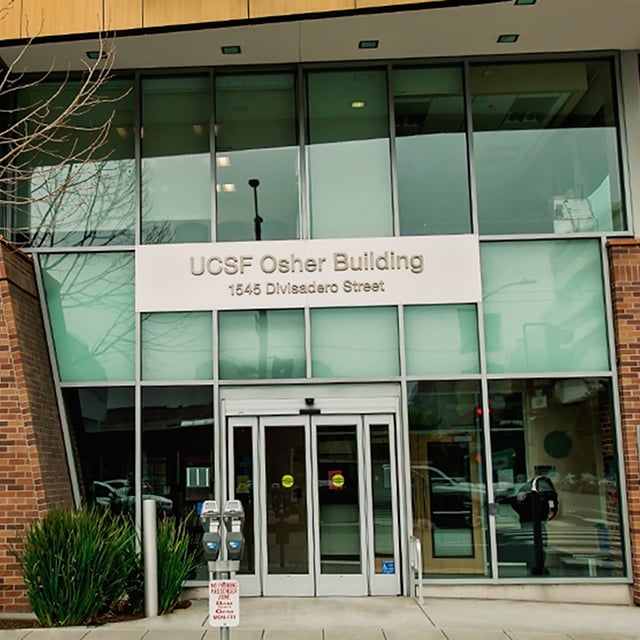
Osher Center for Integrative Health
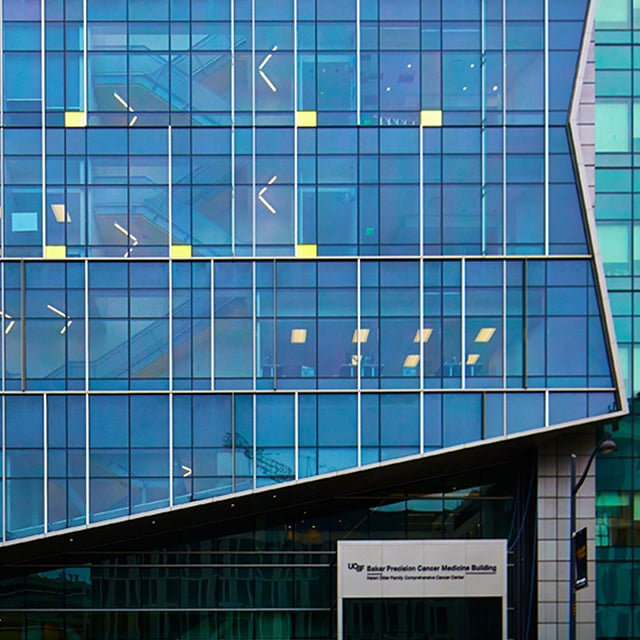 2
2






